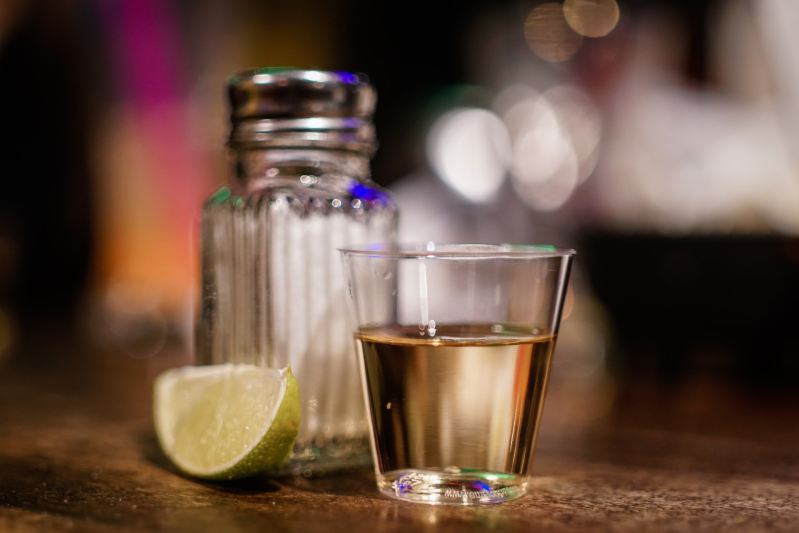I’ve been writing about alcohol since 2006. During this time, I learned many things about many spirits, including tequila. One of the biggest things I’ve learned is that tequila is much more complex than it seems to novice drinkers.
For the unaffiliated, tequila is a distilled spirit made from the Blue Weber agave plant (specifically its heart). Like cognac and bourbon, it has geographic rules. It must be produced in the state of Jalisco (where the town of Tequila is located) and a handful of other states.
If you’re new to the spirit, you might assume that all tequila is clear and un-aged. You also might think this spirit is simply for drinking in shot form or mixing into a cocktail like the iconic Margarita or Paloma. Well, this concept of tequila couldn’t be more wrong and close-minded. Myriad types of tequilas are perfect for any level of tequila drinker, from beginner to the most refined palate.
Jesse Estes, Global Brand Ambassador, Tequila OCHO, recommends new drinkers opt for a reposado.
“Generally speaking, I find reposado to be the most versatile and accessible class of tequila. The light hints of oak round off the flavor profile and impart accents of vanilla, sweet spices, and a custard creaminess.”
He adds, “For tequila beginners, I recommend starting with a well-made, 100% agave tequila. I always advocate for tasting tequila neat, at room temperature in a high-quality tasting glass.”
The different types of tequila

As you’ve likely figured out by now, the tequila world is so much more than the un-aged clear, bargain, plastic handle tequila you drank during your college years. Sure, countless bottom-shelf bottles are still available, but there are also aged, complex, noteworthy tequilas on par with your favorite single malt Scotch whisky, bourbon, and rye whiskey. Below, you’ll find information about the six different tequila types (including a reasonably new arrival). Keep scrolling to see them all.
Blanco

Even if you’re not an avid tequila drinker, you’ve likely had a shot or two of blanco tequila. Also known as silver tequila, this variety is either completely unaged or matured for less than two months.
Tasting notes: This young tequila has more vegetal, fruity agave flavors than the other varieties. This is due to very little or no aging. Other flavors include wet grass, citrus peels, and cracked black pepper.
Reposado

If you’re looking for something with more oomph than blanco tequila, you’ll want to crack open a bottle of reposado. To be considered a reposado, the tequila must be matured for at least two months but less than a year.
Tasting notes: Still a fairly young tequila, this variety still retains the roasted agave, vegetal sweetness found in Blanco tequila. However, the time spent in wood barrels adds flavors like toasted vanilla beans, toffee, brown sugar, candied fruits, and gentle wintry spices.
Añejo

If you’re a whiskey drinker looking to get into tequila, añejo is the type of tequila for you. It’s matured for at least one full year but less than three. This results in a complex, sippable tequila that will appeal to single malt Scotch whisky, bourbon, and aged rum drinkers.
Tasting notes: Now you’re really going to notice the barrel aging at work. The time spent aging gives añejo a balanced flavor profile featuring notes of charred oak, vanilla beans, caramelized sugar, dried fruits, cinnamon candy, cracked black pepper, pipe tobacco, and more.
Extra añejo

While añejo is an excellent choice for whiskey drinkers, extra añejo is for whiskey fans with a more refined palate. Matured for a minimum of three years (with no maximum), extra añejo is as nuanced, balanced, and sippable as tequila gets. You’ll love it so much that you will want to put it side by side with your favorite expensive whiskeys.
Tasting notes: Extra añejo is similar to añejo in that it carries none of the aromas and flavors of the younger tequilas. Like your favorite long-matured whiskey, an extra añejo will have a noteworthy palate containing flavors like fresh leather, pipe tobacco, caramelized sugar, toasted vanilla beans, candied orange peels, roasted agave, and various baking spices.
Joven

Joven, Spanish for “young,” is made by combining younger tequilas like blanco and reposado with older tequilas like añejo. This combination of young and old tequilas creates a smooth, balanced, memorable expression.
Tasting notes: Since it’s made with a combination of young and old, this tequila style has a wide range of flavors depending on who makes it. You can look for flavors like citrus peels, roasted agave, vanilla, toffee, and gentle spices.
Cristalino

Cristalino is one of the newest tequila styles, first created by Don Julio when it launched its 70th anniversary expression in 2012. This style is matured for months or years before being charcoal filtered (similar to many white rums) to remove color and impurities. It might be clear, but it tastes like a long-aged tequila.
Tasting notes: Although it’s clear like a blanco, cristalino has the complex, balanced, nuanced flavor profile of a long-aged tequila. These tequilas are loaded with flavors like roasted agave, vanilla beans, citrus fruits, and light spices.
Mixto

In many circles, “mixto” is a bad word. While still labeled as a “tequila,” it’s a mix of tequila made from Blue Weber agave and other sugars. To be called a mixto, the tequila only needs to contain 51% sugars from Blue Weber agave. The rest can be from things like cane sugar or corn syrup.
Tasting notes: Usually inexpensive, mixto tequilas often have a sugary flavor with some agave, vanilla, and herbal notes and sometimes a harsh alcohol burn.




